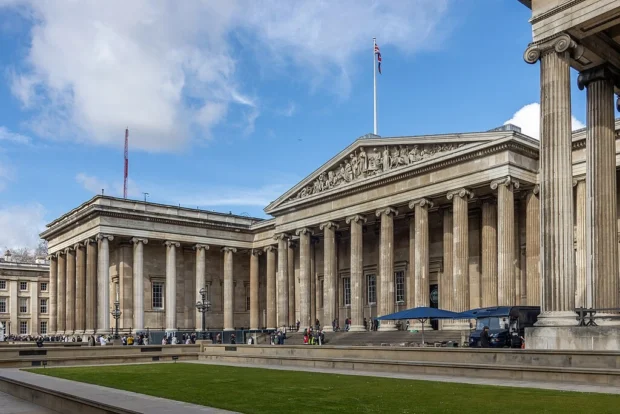In the heart of London, the British Museum stands as an extraordinary gateway to history, culture, and art from across the globe. This iconic institution, located in the Bloomsbury district, offers visitors a chance to witness treasures spanning thousands of years – from Egyptian mummies to Greek sculptures and beyond. For those intrigued by London’s rich urban heritage and architectural landmarks, the British Museum is a must-visit, bringing alive the past through its vast collections. Whether you come fresh off a flight or have wandered from nearby markets and coffee shops, this guide highlights how to navigate, appreciate, and savor every moment inside and around this celebrated museum.
Table of Contents
Entering the British Museum: Directions and Nearby Stays
The British Museum is incredibly accessible from central London and well connected by public transport. By Tube, the closest stations are Tottenham Court Road (Central and Northern lines), Holborn (Central and Piccadilly lines), and Russell Square (Piccadilly line), all within a short walking distance. For those arriving from Heathrow or Gatwick airports, the quickest route involves taking the express train to central London followed by a short Tube ride or bus.
If you prefer a stroll, the museum lies just north of the bustling Oxford Street shopping district and is surrounded by the leafy streets of Bloomsbury, an area admired for its literary history and garden squares. After your visit, you can unwind nearby at charming guesthouses or boutique apartments that capture the neighborhood’s blend of Georgian architecture and contemporary style.
For food lovers, nearby eateries range from quaint cafés serving artisan coffee to historic pubs offering hearty British fare. A wander along Goodge Street or Charlotte Street will reveal many such culinary gems, perfect for a meal or a break in a lively social hub.
The British Museum’s Storied Legacy and Global Importance
The British Museum was founded in 1753, making it one of the oldest public museums in the world. Its creation was inspired by Sir Hans Sloane’s collection of natural specimens, manuscripts, and curiosities, which he bequeathed to the nation. Since then, the museum has grown into a vast repository of human history, art, and culture, spanning continents and millennia.
Walking through its galleries is like traveling through time – you encounter the Rosetta Stone, which unlocked Egyptian hieroglyphs, and the Elgin Marbles, whose dramatic story of acquisition still sparks debate. There’s also the fascinating Assyrian lion hunt reliefs that reveal ancient storytelling techniques and city walls adorned with cuneiform script from Mesopotamia. Each exhibit offers a window into civilizations that shaped humanity’s collective journey.
After enjoying the timeless tales within the British Museum, many find a visit to Westminster Abbey’s historic architecture and royal heritage a fitting continuation of their London journey.
Quirky Stories Behind the Collections
One can’t help but be drawn into the museum’s subtle tales, like how the famous Egyptian mummies were once the subject of Victorian curiosity and sometimes controversy. The Great Court’s glass roof, designed by architect Norman Foster, is a modern marvel that contrasts beautifully with the classical stone façade, creating an architectural dialogue between past and present. These layers of history and innovation make the museum itself a living storybook.
Best Times to Visit and Visitor Tips
To fully enjoy the museum’s vast offerings, timing your visit matters. Weekday mornings, especially Tuesday to Thursday, tend to be less crowded, providing a more intimate atmosphere for appreciating delicate artworks and rare artifacts. Avoid weekends and public holidays if possible, particularly in peak tourist seasons like summer and the Christmas holidays.
After immersing in London’s treasures at the British Museum, you might appreciate the timeless aura of Egyptian wonders like the Pyramids of Giza that shaped much of the museum’s collection.
The British Museum opens daily from 10 am to 5:30 pm, with late openings on Fridays until 8:30 pm. Evening visits can offer a quieter experience and the chance to see special exhibitions without the daytime crowds. Remember to check the museum’s website before your visit for any temporary closures or special events.
Practical Tips for Visitors
- Entry is free, but booking tickets for popular exhibitions in advance is recommended.
- Download the museum’s official app or pick up a map at the entrance to navigate quickly to highlights.
- Wear comfortable shoes-exploring the galleries can easily take several hours.
- Photography is allowed in most areas but without flash; check specific exhibit rules.
- Use the museum cafés for a break; they offer pleasant refreshments with views of the Great Court.
Booking Tours and Reservation Details
While general admission to the British Museum does not require a reservation, some special exhibitions and guided tours do. Booking a guided tour can enrich your experience by providing stories and context you might miss alone. These are often led by expert curators or passionate guides who bring the artifacts to life with fascinating commentary.
Reservations can be made conveniently on the museum’s official website. Options range from group tours to private, themed experiences focused on specific collections like Egyptian antiquities or Asian art. For visitors who prefer self-paced exploration, audio guides and mobile apps offer flexible, informative alternatives.
Atmosphere Around the Museum and Local Experiences
Beyond its walls, the British Museum is surrounded by a vibrant neighborhood that reflects London’s rich cultural fabric. The nearby Russell Square offers a tranquil green space perfect for a reflective pause after your museum visit. The area’s historic streets invite leisurely walks where you might discover Victorian architecture and small artisan shops.
After exploring the British Museum’s vast collections, consider discovering ancient history through the impressive Teotihuacan pyramids near Mexico City on your next adventure. Teotihuacan Pyramids offer a fascinating glimpse into Mesoamerican civilizations.
For those interested in culinary heritage, the vicinity boasts a myriad of cafés that pay homage to London’s coffee traditions. Sampling a flat white or a traditional English breakfast in a local café adds a delicious layer to your city exploration. Additionally, street markets within walking distance feature artisanal foods and crafts, connecting visitors with the city’s creative pulse.
Planning Your Visit: Final Thoughts
Visiting the British Museum is more than a simple sightseeing stop-it is an invitation to engage with human history on a grand scale. The museum’s collections tell stories not just of the past but of cultural intersections and exchanges that continue to shape our world. With careful planning, a wander through its galleries becomes a memorable journey through ancient streets, artistic marvels, and world cultures.
Remember to take your time, soak in the atmosphere, and maybe pause in the Great Court to marvel at Foster’s architectural ingenuity. Whether you arrive from the buzzing city center or a nearby neighborhood, the British Museum welcomes you to unfold stories carved in stone, woven in textiles, and painted on pottery across centuries.
For up-to-date details, ticket reservations, and exhibition information, visit the official British Museum website.

Lover of cities, local cafés, and historic streets, exploring urban life with attention to architecture and culinary delights.
- At the British Museum 2024 002 by Photograph by Mike Peel (www.mikepeel.net). on Wikimedia Commons – cc by-sa 4.0
